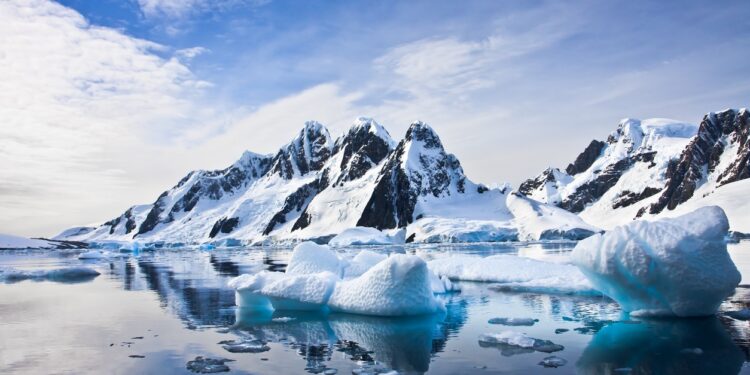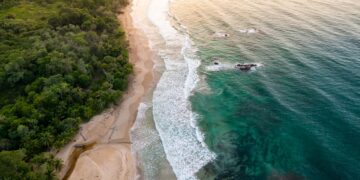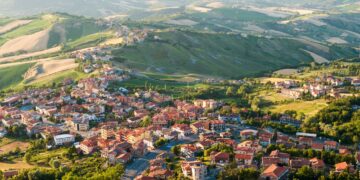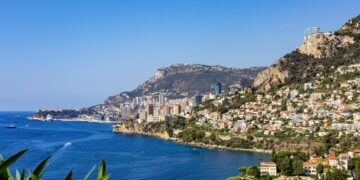Antarctica, the coldest, driest, and windiest continent on Earth, has long captured the imagination of filmmakers, authors, and TV producers worldwide. Its raw, untouched beauty and extreme conditions have served as the perfect backdrop for numerous famous films, as well as TV shows, animated features, and books. This comprehensive guide will take you on an exciting journey through the frosty landscapes of Antarctica, exploring its cinematic history, exciting trivia, and practical travel tips for your icy adventure.
Antarctica’s Role in Cinema
Despite its harsh and inhospitable conditions, Antarctica has starred in a surprising number of films that have enchanted global audiences. From chilling thrillers to heartwarming narratives, let’s explore some of the most famous films shot in Antarctica.
Iconic Films Set in Antarctica
The awe-inspiring landscapes of Antarctica have been beautifully captured in numerous cinematic masterpieces. Here are some of the most iconic films that have brought the icy wilderness of Antarctica to life on the silver screen:
- “The Thing” (1982): John Carpenter’s cult classic horror film offers a chilling depiction of an Antarctic research station besieged by a shape-shifting alien.
- “March of the Penguins” (2005): This Oscar-winning documentary by Luc Jacquet follows the epic journey of Emperor Penguins across the Antarctic tundra.
- “Happy Feet” (2006): Although an animated film, the movie’s stunning visual representation of Antarctica is highly commendable.
- “Eight Below” (2006): This heartwarming survival tale is based on a true story and showcases the harsh yet beautiful landscapes of Antarctica.
- “Encounters at the End of the World” (2007): Werner Herzog’s captivating documentary offers an intriguing glimpse into the lives of people who choose to live and work in Antarctica.
Each of these films highlights different aspects of Antarctica, from its breathtaking beauty to its treacherous weather, offering viewers a unique perspective of this remote continent.
TV Shows Set in Antarctica
Antarctica has also served as an intriguing backdrop for several TV shows. From thrilling adventure series to intriguing documentaries, here are a few noteworthy TV shows set in Antarctica:
- “Frozen Planet” (2011): This BBC nature documentary series, narrated by David Attenborough, provides an extensive exploration of both polar regions, including Antarctica.
- “The Last Place on Earth” (1985): This British mini-series dramatizes the famous race to the South Pole between Roald Amundsen and Robert Falcon Scott.
- “Race to the Pole” (2007): James Cracknell and Ben Fogle star in this reality series chronicling their attempt to reach the South Pole on foot.
- “Antarctica: A Year on Ice” (2013): This documentary series offers an intimate look into the lives of the people who live and work in Antarctica year-round.
- “South Pole Epic” (2013): This National Geographic mini-series follows two competing teams as they race across Antarctica to reach the South Pole.
These shows provide an intriguing and diverse depiction of Antarctica, offering viewers a deeper understanding of this remote and icy world.
Animated Films Set in Antarctica
Despite its extreme conditions, the enchanting beauty of Antarctica has also served as an inspiration for several animated films. From musical penguins to daring sled dogs, here are a few animated films that have beautifully captured the spirit of Antarctica.
- “Happy Feet” (2006): This Academy Award-winning film tells the story of a tap-dancing penguin in Antarctica and features stunning animated recreations of the icy continent.
- “The Pebble and the Penguin” (1995): This musical adventure film, set in Antarctica, follows the quest of a shy penguin to find the perfect pebble to propose to his beloved.
- “Balto III: Wings of Change” (2004): Although not entirely set in Antarctica, several key scenes in this animated adventure film take place in the Antarctic landscape.
These vibrant and heartwarming animated films offer a fun and family-friendly glimpse into the icy landscapes of Antarctica.
Famous Books Set in Antarctica
Antarctica’s dramatic landscapes and extreme conditions have also made it a popular setting for numerous literary works. From thrilling adventures to scientific explorations, here is a selection of famous books set in Antarctica.
Classic Books
- “The Worst Journey in the World” by Apsley Cherry-Garrard: This memoir details the ill-fated Terra Nova Expedition led by Robert Falcon Scott in his attempt to reach the South Pole.
- “South” by Ernest Shackleton: A riveting account of Shackleton’s harrowing Antarctic expedition aboard the Endurance, which became trapped in ice and ultimately sank.
- “Endurance: Shackleton’s Incredible Voyage” by Alfred Lansing: This book offers a detailed and dramatic account of the survival of Ernest Shackleton and his crew when their ship was trapped and destroyed by pack ice.
Contemporary Books
- “Where’d You Go, Bernadette” by Maria Semple: While not entirely set in Antarctica, crucial parts of this quirky, contemporary novel take place on a cruise ship heading for Antarctica.
- “Antarctica” by Kim Stanley Robinson: This near-future science fiction novel offers a riveting portrayal of the challenges and wonders of life in Antarctica.
- “The White Darkness” by Geraldine McCaughrean: This young adult novel follows the harrowing tale of a young girl’s survival journey across the Antarctic wilderness.
These books offer readers a literary journey through the icy heart of Antarctica, capturing the awe-inspiring beauty and daunting challenges of this remote wilderness.
Exploring Antarctica’s Filming Locations – Where to Go
To truly immerse yourself in the cinematic history of Antarctica, there are several key locations you must visit. These locations offer a unique experience that allows you to step into the scenes of your favorite films and witness the breathtaking beauty of Antarctica firsthand.
- McMurdo Station: As the main U.S. research station in Antarctica, McMurdo has been featured in several films and TV shows. The station offers an intriguing glimpse into life in Antarctica.
- South Pole: The South Pole has been the setting for numerous films, books, and TV shows, making it a must-visit location for any film enthusiast.
- Port Lockroy: This British base turned museum was the filming location for the documentary “Penguin Post Office” and offers a unique insight into the history of human habitation in Antarctica.
- Deception Island: The site of an abandoned whaling station, Deception Island’s eerie landscape has served as the backdrop for several films, including “The Thing”.
- Lemaire Channel: Known as “Kodak Gap” due to its stunning beauty, this narrow channel offers some of the most picturesque views in Antarctica and has been featured in countless documentaries.
Visiting these locations will provide you with a deeper understanding of why filmmakers and authors are drawn to the unique landscapes of Antarctica.
Where to Sleep in Antarctica
Accommodations in Antarctica are primarily research stations, with no traditional hotels. However, there are a few options for overnight stays. Here are some suggestions for where to sleep in Antarctica.
Budget Options
- Camping: Some Antarctic cruises offer camping expeditions where you can sleep on the ice under the Antarctic sky.
- Research Stations: Some research stations offer accommodations for visitors. It’s not luxurious, but it’s a unique experience.
- Cruise Ship: Most visitors to Antarctica sleep on the cruise ship that brought them. This is a more comfortable option, especially for those on a budget.
Luxury Options
- Luxury Cruises: Some cruise lines offer luxury cabins with all the amenities of a high-end hotel.
- Private Yachts: For the ultimate luxury experience, charter a private yacht with a crew that caters to your every need.
- Fly-In Lodges: Companies like White Desert offer the ultimate luxury Antarctic experience, with a private jet flight to Antarctica and accommodations in a state-of-the-art lodge.
Where to Eat in Antarctica
As Antarctica is an uninhabited continent, there are no traditional restaurants. However, meals are included in cruise packages and at research stations for guests. Here are some options for where to eat in Antarctica.
Budget Options
- Cruise Ship Cafeterias: Cruise ships offer a variety of meal options in their cafeterias, included in the price of your ticket.
- Research Station Cafeterias: If you’re lucky enough to visit a research station, you can enjoy hearty meals prepared for the hardworking scientists and staff.
- Self-Catering: If you’re camping or staying at a fly-in lodge, you may need to bring and prepare your own food.
Luxury Options
- Cruise Ship Restaurants: Higher-end cruise ships offer fine dining experiences, with expert chefs preparing a variety of gourmet dishes.
- Private Chef Services: If you’re chartering a private yacht or staying at a luxury lodge, you can enjoy meals prepared by a private chef.
- Specialty Dining Experiences: Some luxury cruises offer specialty dining experiences, like private dinners on the ice.
Detailed Itinerary Day by Day
To make the most of your Antarctic adventure, we’ve curated a comprehensive day-by-day itinerary that covers the most iconic filming locations and experiences.
Day 1: Arrival and Deception Island
Arrive in Ushuaia, Argentina, the southernmost city in the world. Board your cruise ship and sail through the Beagle Channel. Arrive at Deception Island, an active volcano and filming location for “The Thing”.
Day 2: Port Lockroy and Lemaire Channel
Visit Port Lockroy, a filming location for “Penguin Post Office”. Sail through the stunning Lemaire Channel, featured in countless documentaries.
Day 3: South Pole
Visit the South Pole, the setting for numerous films, books, and TV shows. Explore the Amundsen-Scott South Pole Station and learn about the scientific research conducted here.
Day 4: McMurdo Station
Visit McMurdo Station, the main U.S. research station in Antarctica. Explore the station and learn about life in Antarctica.
Day 5: Departure
Depart Antarctica and sail back to Ushuaia. Reflect on your incredible journey as you sail through the Drake Passage.
Cryptid Legends and Curiosities
Antarctica, with its remote and harsh landscape, has given rise to numerous cryptid legends and curiosities. From the belief in hidden Nazi bases to tales of lost civilizations buried under the ice, Antarctica is a hotbed of mystery and intrigue.
One such legend is the story of the “Ningen,” a humanoid sea creature reported by Japanese fishermen. Described as being 20-30 meters in length with a human-like shape, the Ningen is said to inhabit the icy waters of Antarctica.
Another popular legend is the “Organism 46-B” conspiracy theory, which claims that a team of Russian scientists discovered a dangerous squid-like creature in Lake Vostok, a subglacial lake in Antarctica. Although these stories lack scientific evidence, they add a layer of mystery and fascination to this icy wilderness.
Hidden Gems in Antarctica
While the main attractions of Antarctica are well-documented, the continent is also full of hidden gems waiting to be discovered.
- Blood Falls: This natural phenomenon, where iron-rich water seeps from the Taylor Glacier, creating a blood-red waterfall, is a stunning sight.
- Mount Erebus Ice Caves: These ice caves, formed by volcanic steam, are a lesser-known attraction that offers a unique view of Antarctica’s landscapes.
- Petermann Island: Home to a large colony of Adélie penguins, this island provides a unique opportunity for wildlife watching away from the crowds.
- The Dry Valleys: These ice-free valleys, considered one of the driest places on Earth, offer a unique and otherworldly landscape.
- Detaille Island: Here, you can visit “Base W”, a British research station from the 1950s that’s been preserved as a museum.
Exploring these hidden gems provides a unique perspective on Antarctica and allows you to experience the continent’s lesser-known beauty.
What to Pack for a Trip to Antarctica
When packing for your Antarctic adventure, it’s important to consider the extreme weather conditions. Here are some recommendations on what to pack for a trip to Antarctica:
- Warm Clothing: Pack thermal base layers, a warm mid-layer (like a fleece or down jacket), and a waterproof outer layer.
- Footwear: Insulated, waterproof boots are essential. Look for boots with non-slip soles and removable inner linings for added warmth.
- Accessories: Don’t forget warm gloves, a hat, and a scarf. Sunglasses and sunscreen are also essential to protect against the glare from the snow.
- Camera Gear: You’ll want to capture the stunning landscapes and wildlife of Antarctica. Don’t forget extra batteries, as they can drain quickly in the cold.
- Medications and Toiletries: Pack any necessary medications, as well as toiletries like lip balm and moisturizer to protect against the dry, cold air.
Remember, packing right can make the difference between a comfortable journey and a miserable one. So pack wisely!
Transportation Tips
Getting around Antarctica is primarily done by ship, with zodiac boats used for shore landings. Here are some transportation tips for your Antarctic adventure:
- Choose the Right Cruise: Different cruises offer different itineraries and experiences. Research and choose one that suits your interests and budget.
- Follow Safety Guidelines: Safety is paramount in Antarctica. Always follow the guidelines provided by your guide during shore landings and on-board the ship.
- Be Prepared for Sea Sickness: The waters of the Drake Passage can be rough. If you’re prone to seasickness, bring appropriate medication.
- Stay Flexible: Weather conditions in Antarctica can change rapidly, affecting travel plans. Be prepared for changes in your itinerary.
Remember, traveling to Antarctica is an adventure. Embrace the unpredictability and enjoy the journey!
Conclusion
From famous films shot in Antarctica to gripping books and TV shows, Antarctica’s icy landscapes have served as the canvas for countless memorable narratives. Visiting the filming locations and exploring this frozen wilderness is a truly unique experience. So bundle up, pack your sense of adventure, and get ready to embark on a cinematic journey through the heart of Antarctica.













